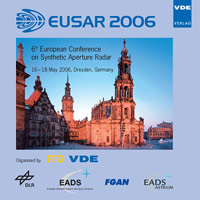Efficient Calibration of Active-Phased-Array SARs
Conference: EUSAR 2006 - 6th European Conference on Synthetic Aperture Radar
05/16/2006 - 05/18/2006 at Dresden, Germany
Proceedings: EUSAR 2006
Pages: 4Language: englishTyp: PDF
Personal VDE Members are entitled to a 10% discount on this title
Authors:
Torres, Ramón (ESTEC (European Space Agency), Noordwijk, The Netherlands,)
Zink, Manfred (DLR (German Aerospace Center), Microwaves and Radar Institute, Weßling, Germany)
Abstract:
Calibration of the first space-borne SAR instruments, with only one swath and based on passive antenna technologies, (e.g. ERS-1) required the in-flight characterisation of that single-swath instrument over well-known scatterers (reflectors, transponders and rainforest sensing data). Modern systems evolved to more access flexibility -therefore, multiple beams-, and multi-polarisation that led to the use of complex active phased-array antennas. In-orbit calibration of such complex SAR system can be a very time-consuming and expensive exercise that takes time off the spacecraft lifetime. The full characterisation on ground presents the additional risk of a limited validity if during the early phases of the in-flight operations a number of sub-arrays suffer degradation (i.e. failure of T/R module functions or irrecoverable phase and gain drifts). If this type of degradation occurs, an inflight re-characterisation of the instrument throughout the different beams (i.e. using repeating passes over the rain forest, etc.) is the only way to keep the required accuracy. After the lessons learnt during the ENVISAT ASAR commissioning, this paper present a new concept for SAR calibration built around a mathematical antenna model based on accurate on-ground measurement of the instrument, a set of post-launch external measurements to be performed during the initial commissioning period, periodic in-flight internal characterisation, and the internal calibration data to be taken during and together with the sensing data. Such an accurate antenna model is a very powerful tool both for pre-flight characterisation of all antenna beams, and for in-flight estimation of the actual patterns.


